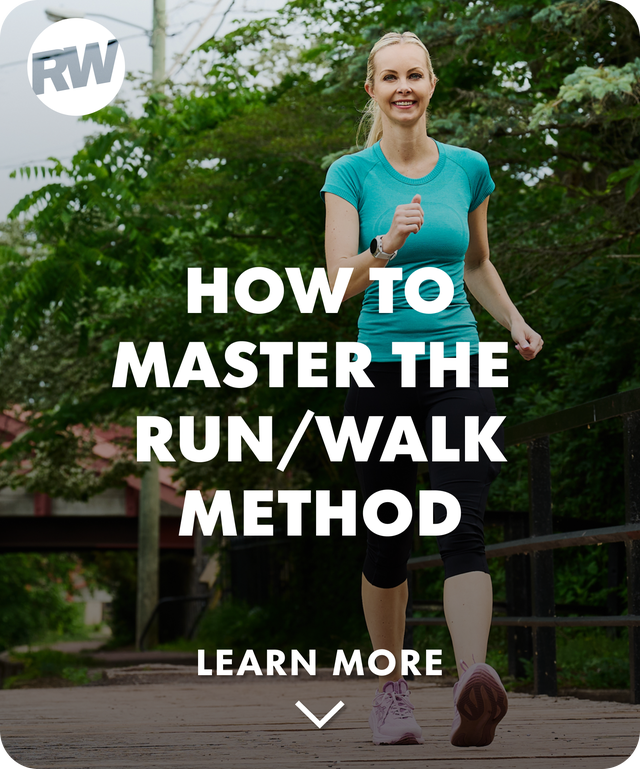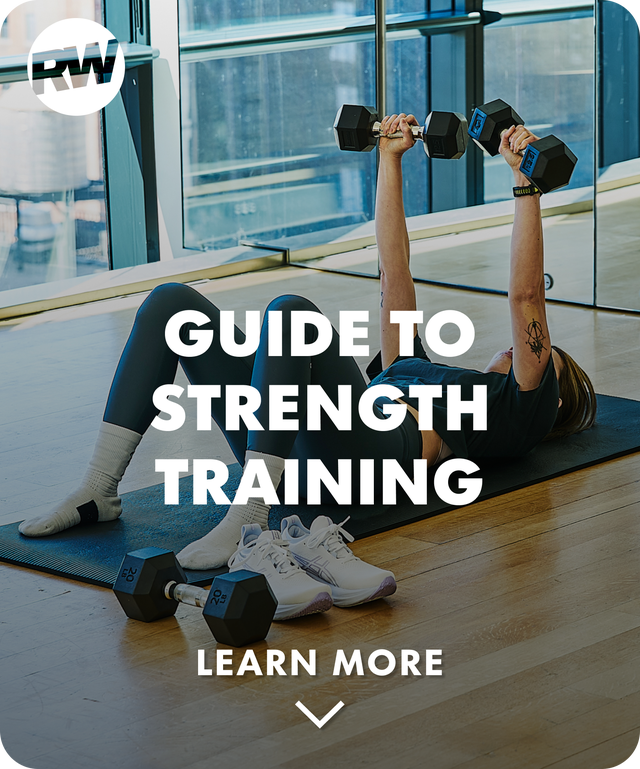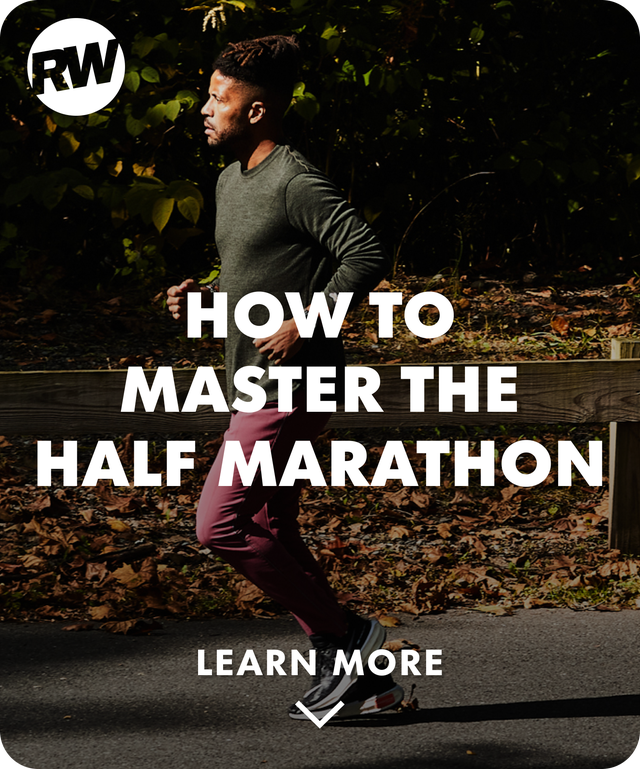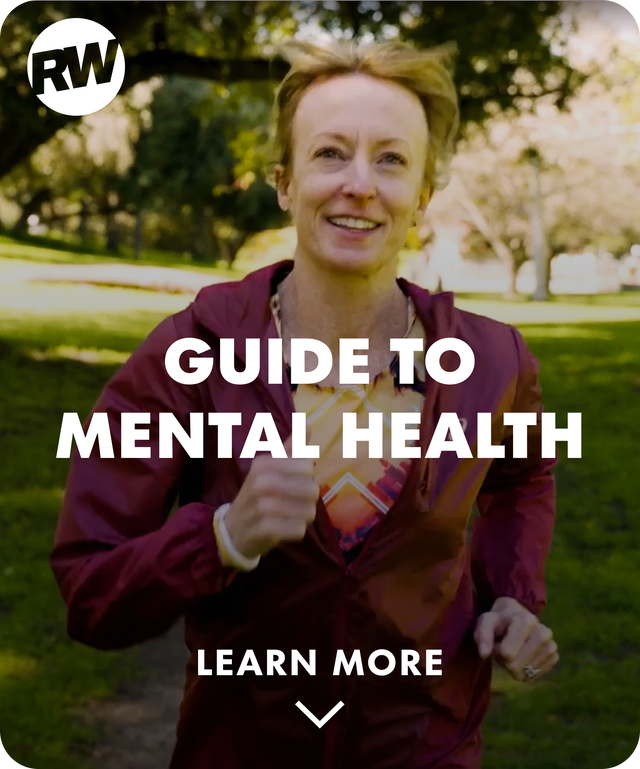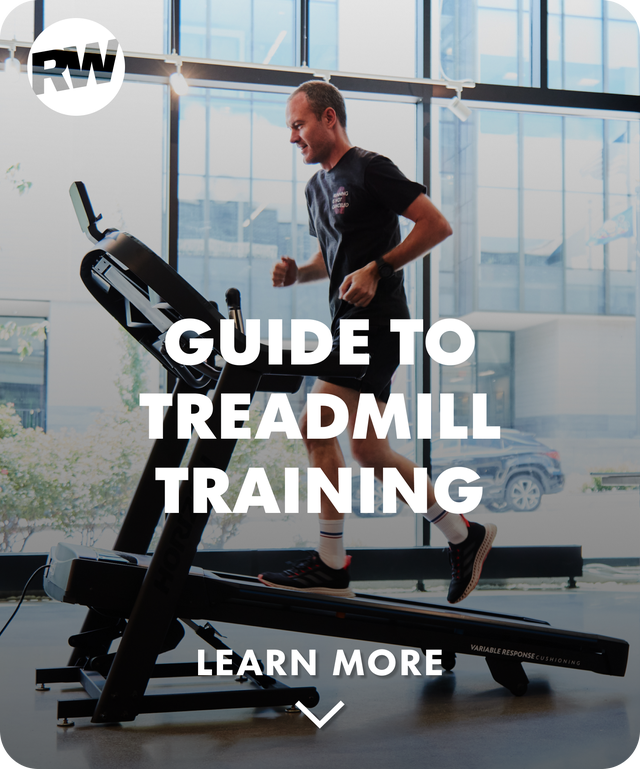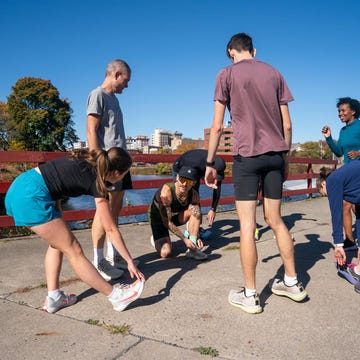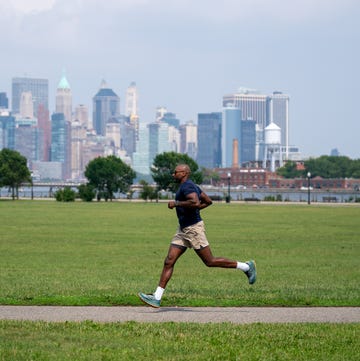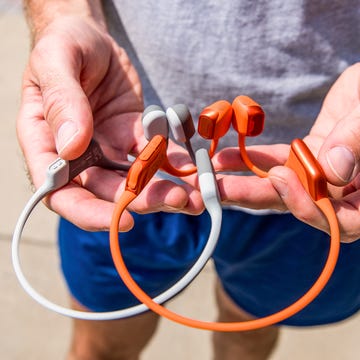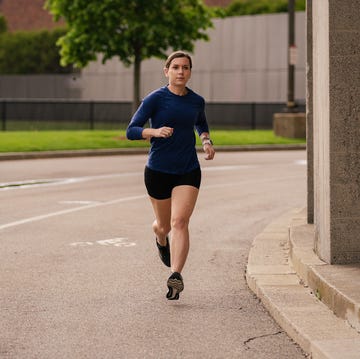You’re halfway through a run when your legs start feeling like cement blocks. Your breathing becomes heavy and ragged, and that nagging side stitch just won’t subside. Your goal was to make it 20 more minutes, but you’re too gassed to continue. What gives?
Running is an inherently tiring activity, and most training programs will include some sessions that leave you fully spent. But if you’re feeling intensely fatigued on every run, and that’s screwing with your ability to finish workouts, it’s time to re-tool your approach.
We tapped two coaches for intel on the common beginner mistakes that can make running long so tiring, plus how to overcome them. Stay right here for the info you need to lace up for longer without wrecking yourself in the process.
Why Running Can Feel So Tiring
There are various reasons why running can feel so dang fatiguing. But for beginners, it typically boils down to one of two mistakes: Either you’re running at too high of an effort, or you’re cranking up your distance too quickly, Jacob Phillips, a Texas-based run coach with RunDoyen, tells Runner’s World.
The former is what exercise physiologist Janet Hamilton, founder of Running Strong in Georgia, sees most commonly with new runners. “Far too many beginners feel like they need to go out at race pace all the time,” she tells Runner’s World. Not only can this up your risk of injury (higher intensity delivers more stress to your bones, joints, and ligaments), it is also really taxing on your muscles and cardiovascular system, hence the hard-hitting fatigue.
On the distance front, trying to tackle too many miles without an adequate ramp up can overload your muscles, joints, and cardio abilities, triggering similar feelings of exhaustion.
Beyond that, other mistakes involving nutrition, hydration, breathing, form, and even your mental state can contribute to persistent feelings of tiredness while running. Fortunately, all of these errors are correctable. Even better, introducing a few small tweaks—which we detail below—can make a big difference.
First though, an important caveat: Sometimes excessive fatigue while running can be caused by an underlying health condition, such as heart disease. Warning signs include having intense shortness of breath or chest pain during a run, or feeling especially fatigued or challenged by a workout that was previously no biggie. These are red flags, according to Johns Hopkins Medicine, which advises chatting with your doctor before you ramp up your running to better understand what to look out for and how to respond if anything concerning crops up.
How to Run Longer Without Getting Tired
Ready to run longer without hitting the wall? Fight fatigue and tackle bigger distances with these expert tips from Phillips and Hamilton.
1. Run Relaxed
To combat running fatigue caused by going too hard, Phillips recommends new runners focus on feeling as comfortable and relaxed as possible while they stride. “I know that seems kind of counterproductive,” he says, but it’s key if you want to eventually run longer.
To get a better gauge of what easy effort actually means, he suggests doing a 20-minute run where you go 10 minutes in one direction at a pace you think is easy, then turn around and run 10 minutes back at that same effort level. The goal is to make it back to the starting place just in time, or bypass your starting position slightly. If it takes you more than 10 minutes to make it back, then you know you ran too hard on the way out, Phillips explains.
Do this once a week until you’re able to return to your starting position in 10 minutes or less. From there, up the ante to 15 minutes in each direction. Repeat the test once a week until you can make it back to that starting position in 15 minutes or less, then increase to 20 minutes in each direction.
Once you’ve mastered 20 minutes in one direction and back, do this workout once a month as a check-in test. The ultimate goal is to hone your understanding of what easy pace truly means.
2. Focus on Duration and Gradual Builds
Increasing your mileage too quickly is a surefire way to feel overly fatigued while running. To combat that, Phillips recommends new runners track and progress their workouts by minutes instead of miles. A time-based approach to training can offer a lot for new runners in particular, including making the sport less intimidating and removing any intrinsic pressure to push the pace.
Here’s how it works: Start by going on a 15- to 20-minute run. The goal is to comfortably run the whole thing at a fairly even pace. If that doesn’t feel feasible, try a 10- or even five-minute run. Once you find a level that feels comfortable for you, add on five minutes. Stay at that next level until you feel comfortable, then add on another five minutes. Continue this pattern, gradually tacking on five minutes at a time as you get stronger.
Aim to add on five minutes every week, though adjust that timing based on how your exertion levels feel. (If you still feel like you’re working hard in those extra five minutes, give yourself another week at that duration.) With this approach, you’ll slowly but surely build up your strength and endurance.
Once you’re up to about 30 minutes of continuous, comfortable running, feel free to track your runs by mileage if you prefer, Phillips says.
3. Keep it Conversational
We’ve already established that running, by itself, is a challenging sport. But that doesn’t mean your workouts should feel forced or strained. If they do, that’s likely a sign you’re pushing the pace too much and at risk of fatiguing out early.
One way to keep your pace in check is to make sure you can carry on a conversation while you stride. This doesn’t mean reciting a full novel, but you should be able to speak one to two sentences at a time without gasping for breath, Phillips says. If that feels too difficult, take it as a cue to slow your stride.
4. Switch Up Your Breathing
Focusing on your breath can help you relax more on the run, which can then make your effort feel easier. Rhythmic breathing, in particular, can help you calm down, breathe easier, and find your easy pace.
Instead of inhaling and exhaling in a steady rhythm (for example: breathing in over the course of two foot strikes, then breathing out over the course of two foot strikes), you coordinate your foot strike with inhalations and exhalations in an odd/even pattern, Hamilton explains.
That could look like inhaling for three foot strikes and exhaling for two foot strikes, or vice-versa, Hamilton explains. By doing this, you alternate landing on your left and right foot at the beginning of each exhalation.
While there’s no specific research on this, Hamilton believes rhythmic breathing can help you avoid getting the dreaded side stitch. That’s because you’re changing up the pattern of contraction of the diaphragm—a big core stabilizer—from the left side of the body to the right side, as your foot hits the ground, which is when you need more core activation. This can, in turn, help you sidestep fatigue in the core muscles, helping you avoid that side sticker sensation.
5. Ease Tension in Your Form
Phillips calls it the “I’m working really hard face,” which is the grimace a lot of runners get when they are tensing their bodies up in an effort to go fast. But holding onto this type of tension is essentially just wasted energy, which is why it’s better to relax your face, neck, arms, and hands as you stride.
So the next time you run, take a moment to check in on your form: Let go of any tension in your jaw, unclench your hands, and let your arms swing naturally.
6. Lean Into Strength Training
Having a regular strength training routine is key if you want to run longer with less fatigue, Phillips says. Not only can strength work boost your running economy, helping you run longer and harder with less effort, it also lowers your risk of injuries. Most coaches recommend at least two weightlifting sessions a week.
Check out our strength-training guide for runners to get started with lifting today!
7. Stay On Top of Hydration and Nutrition
Dehydration can make your heart work harder, which causes your heart rate to increase and can make your easy paces feel tougher, as Runner’s World previously reported. It can also tire out your muscles a lot faster, Phillips adds.
The antidote to this is staying well-hydrated, which becomes even more important during the hot, humid summer months. To make sure you’re well hydrated, aim to meet the Institute of Medicine’s recommendation for total daily water intake (from fluids and foods): 125 fluid ounces for men ages 18 to 50 and 91 ounces for women in the same age group. Light yellow urine can indicate you’re well hydrated, and dark yellow urine is a sign it’s time to drink up.
While you’re at it, make sure your nutrition is on point, too. What you eat can have a big effect on your energy levels both during a run and throughout the day. Understand that what you eat before, during, and even after a workout will vary depending on the workout.
While you want carbs before most runs, if you have enough time to digest (at least an hour), a little protein can help you avoid sugar spikes. If you’re planning to go longer than 60 to 90 minutes, you want to bring more carbs with you. And after exercising, make sure to get in another dose of carbs, along with protein to help with recovery.
8. Warm Up Before Every. Single. Run.
Warmups can seem like a skippable component of training–especially for the time-strapped exerciser–but this step is actually really important for fighting midrun fatigue.
As Runner’s World previously reported, a small 2015 study published in the Journal of Strength and Conditioning Research found when runners busted out dynamic stretches before hopping on the treadmill, they sustained a hard effort for longer when compared to running without stretching before.
You don’t need to dedicate much time to reap these energy-boosting benefits: Here’s a five-minute routine that’ll get the job done.
9. Lace Up With Others
There are tons of benefits to lacing up alongside others, including the very cool fact that it can make your workout feel less taxing.
Research confirms this: A 2021 study of parkrun, a global community-based 5K run, found people who attended the runs with family and friends felt more energized, enjoyed their runs more, and ran faster than those who attended solo.
So if all your runs are exhausting you, consider enlisting a running buddy, or join a run club, for support.
10. Get Your Mind Right
Your glutes and quads aren’t the only powerhouse muscles driving your running—your mind is a key player too. And on that front, the thoughts racing through your brain can affect how tired you feel.
“If you are not looking forward to running, then you are for sure going to fatigue fast,” Phillips says.
So instead of dwelling on the negative—like “ugh, this workout is going to be so hard!” or “my quads are already burning; I’ll never make it through”—focus on why you started running in the first place, Phillips says. Was it to boost your mental health? Keep up with your grandkids? Feel more connected to nature? Let that be your positive motivator.
11. Cap Your Long Runs
As a general rule of thumb, Hamilton suggests capping your long runs at 30 to 40 percent of your total weekly mileage. For example, if your long run is five miles, your weekly total mileage should be at least 13 miles. This helps ensure you have the endurance base needed to comfortably tackle the distance of your long run, she explains.
12. Hit the Trails
Hamilton loves to prescribe trail running to her athletes who are struggling to reign in their pace or jumping up their distance too aggressively. The unpredictable terrain of trail running forces people to slow down and collect their stride, she explains. Plus, the varied scenery and immersion into nature can provide a powerful mental boost that may just make your workout feel less taxing. “See if you don’t come out of that run feeling a little more uplifted,” Hamilton says.
13. Be Patient and Give Yourself Grace
Many new runners get into the sport wanting fast results. This can push them to adopt a “no pain, no gain” mentality, which spurs them to dial up the pace too much.
But it’s important to realize distance running isn’t a “fast results” activity, Phillips says. Instead, it takes time—weeks to months—to achieve improvements in your strength and endurance, Hamilton says.
So rather than expecting big results right off the bat, be patient with the process and give yourself grace. “You have to work from where you are and build toward what you imagine is possible,” Hamilton says.

Jenny is a Boulder, Colorado-based health and fitness journalist. She’s been freelancing for Runner’s World since 2015 and especially loves to write human interest profiles, in-depth service pieces and stories that explore the intersection of exercise and mental health. Her work has also been published by SELF, Men’s Journal, and Condé Nast Traveler, among other outlets. When she’s not running or writing, Jenny enjoys coaching youth swimming, rereading Harry Potter, and buying too many houseplants.

